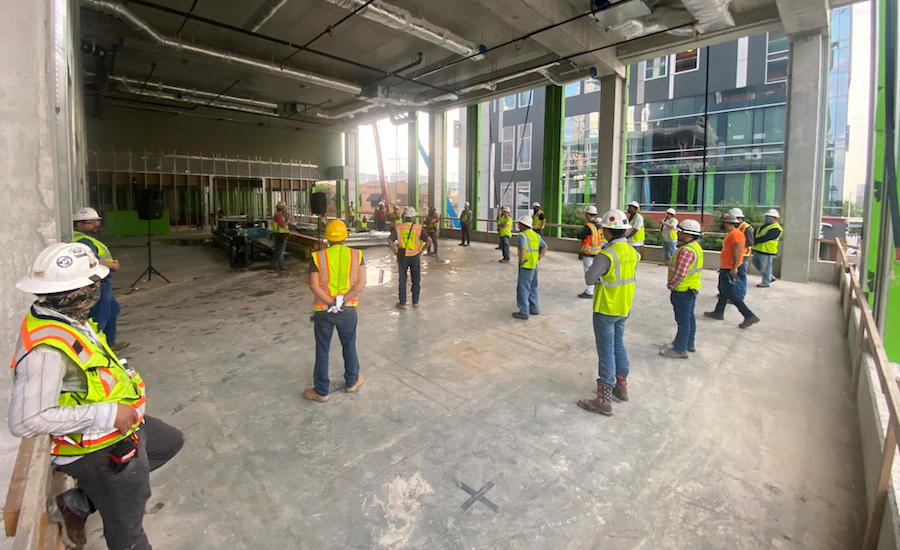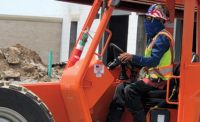Emphasizing the critical need for contractors to fully implement the latest coronavirus-related safety measures at all jobsites, the Associated General Contractors of America staged a national safety stand down April 9. According to AGC, nearly 500 contractors and more than 31,000 workers participated in the stand down.
Brian Turmail, spokesman for AGC of America, says the event is a follow-up to the association’s recent advice to members: “You need to appreciate that your ability to continue operating construction projects is dependent upon ensuring that you are protecting your workers and, through that, protecting the public from the spread of the coronavirus. There's no margin for error here.”
The issue of worker safety—and whether construction sites should be kept open during the pandemic—has attracted increased attention lately, notably with the action by thousands of union carpenters in Massachusetts who refused to show up for work on April 6.
Turmail says the industry’s first priority is to protect workers.
“We've all heard about and seen pictures of jobsites where workers are bunched together and moving unprotected,” he says. In turn, Turmail says, those images can prompt members of the public to rightfully wonder if contractors are protecting their workers, and by extension, local communities, from the risk of contracting the virus.
Further, says Turmail, part of the AGC of America’s pitch to the Dept. of Homeland Security encouraging the agency to allow construction projects to continue was that contractors would adopt and implement the necessary safety protocols.
“We have to deliver on that promise,” Turmail says. “By and large we are, but it only takes one project site where people are not doing what they need to do to raise legitimate questions with local elected officials about safety.”
Jim Person, senior vice president of field operations with Minneapolis-based Ryan Companies—a participant in the stand down—said the company has implemented the now-standard practices such as social distancing, heightened hygiene and sanitizing protocols, as well as screening of anyone entering the jobsite.
“But what I’m most proud of is the way our superintendents and team members have stepped up, adding additional measures unique to their sites to keep all their workers safe and healthy,” said Person in a statement to ENR. “They have added dedicated workers to act as social distancing monitors and cleaners, implemented one-way stairwells—dedicating one up and one down—and eliminated communal lunch/break seating.”
For this national event, the contractors’ association was following the lead of state AGC chapters that recently sponsored their own safety stand downs. Notably, AGC of California’s coronavirus safety stand down—held the first week of April—attracted nearly 200,000 participants, including the California Dept. of Transportation, the Los Angeles Metropolitan Transportation Agency and other agencies, contractors and labor unions, says Peter Tateishi, chief executive at AGC of California.
“If we can’t be safe at our job sites, we can’t support people being safe at home— you need both,” Tateishi says. “Their ability to be safe at home means that we have to be safe at our jobsites.”
Among those taking part in the stand down was Rock Halverson, a manager with Las Vegas-based Hal Mechanical Inc. The company held safety stand downs at all of its jobsites, as well as in its shop, said Halverson.
Keeping tools assigned to a single employee, and keeping these tools clean and “wiped down” are among the strategies the company is implementing. Other safety measures—such as maintaining a 6-ft distance from other employees—are easy enough to implement in certain situations, but not in all.
“It takes quite a bit of time, but it can be done,” Halverson says. But all employees are trying to enact these safety measures as much as possible. After all, he says, “Everybody’s a little bit scared about getting [the coronavirus].”






Post a comment to this article
Report Abusive Comment